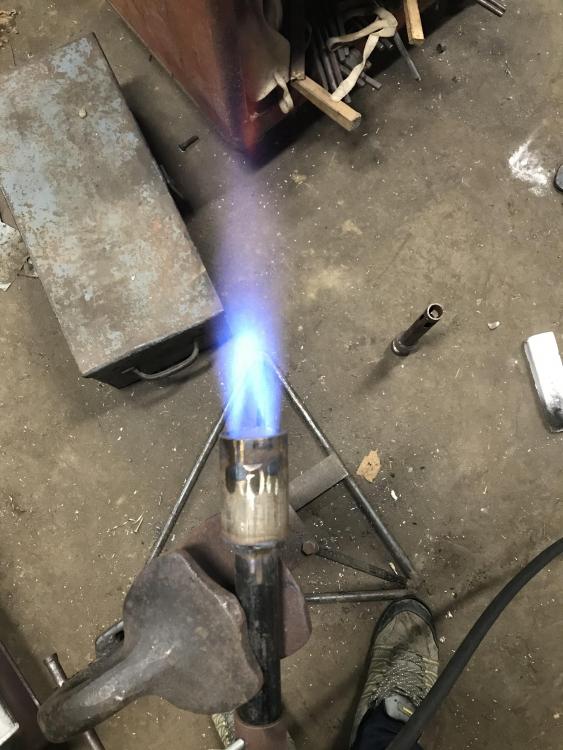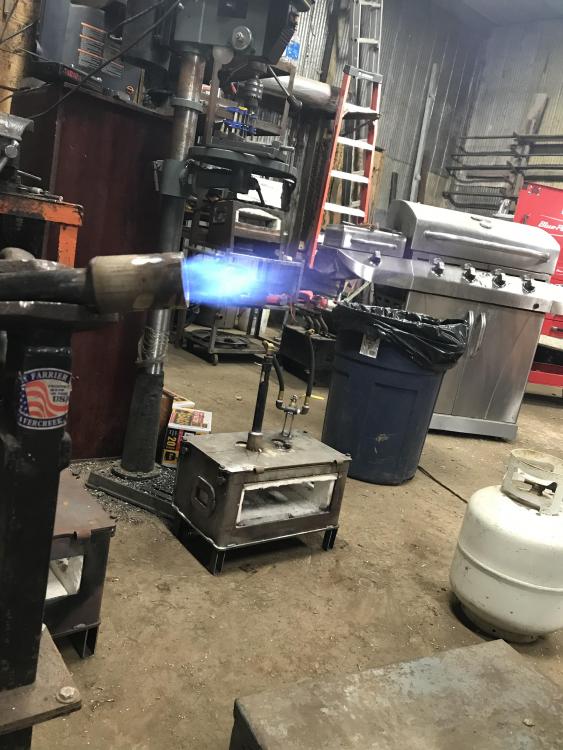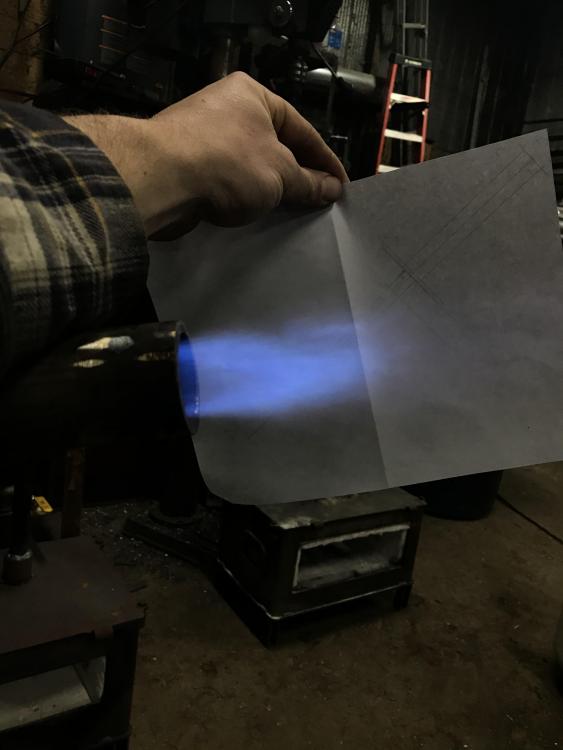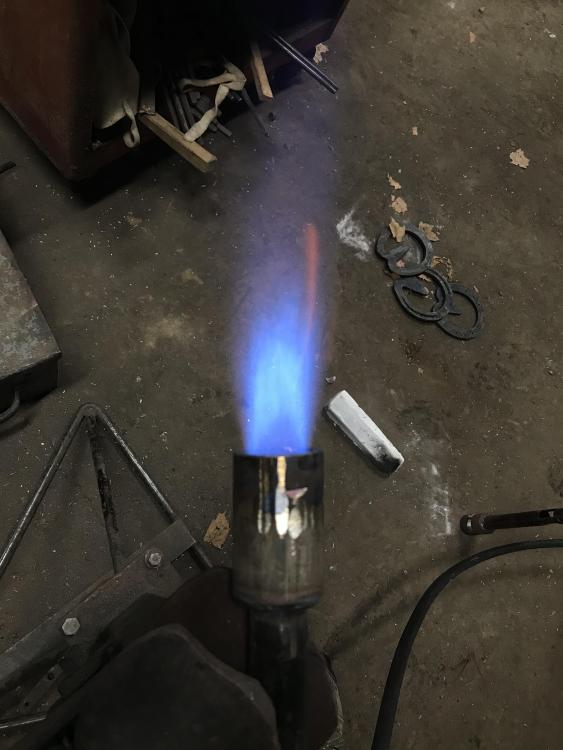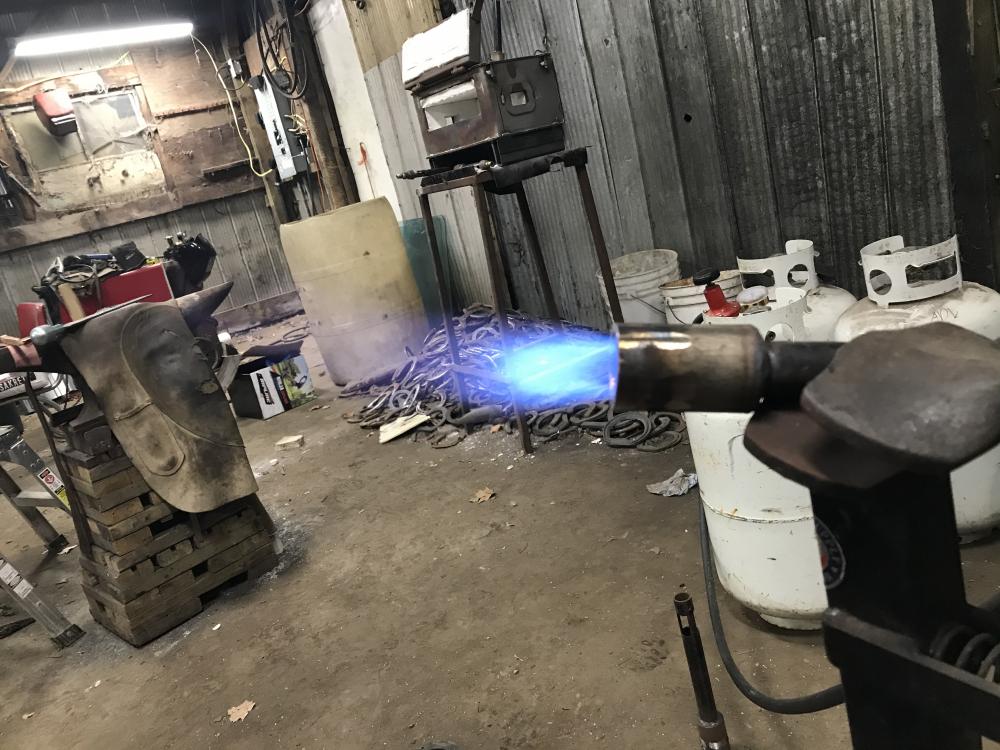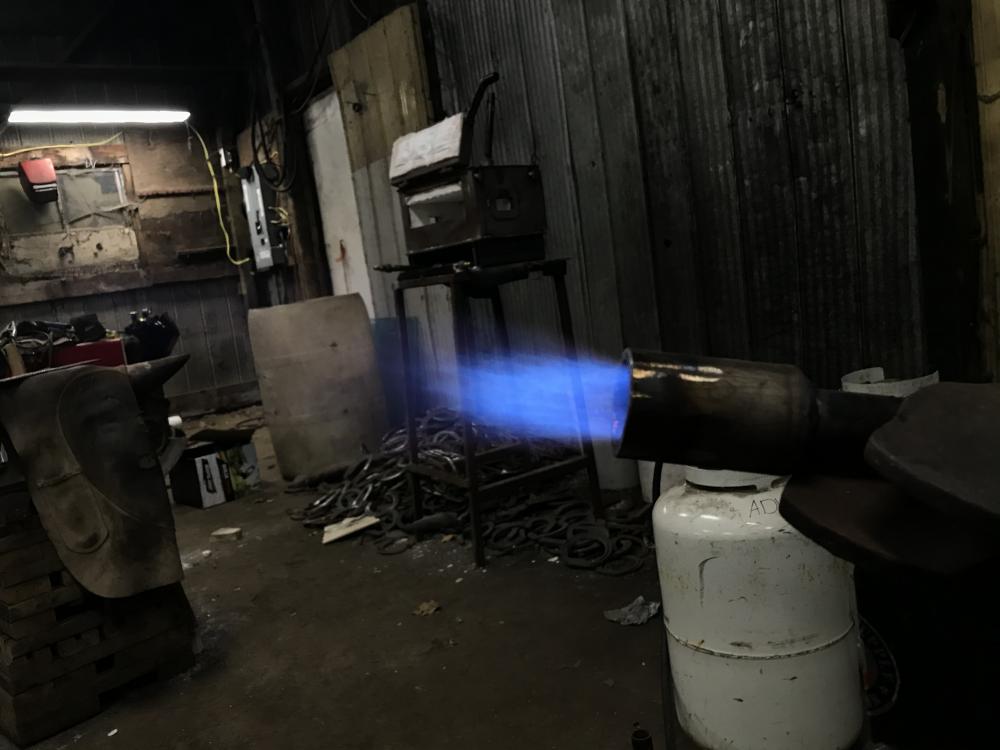
Alphafarrier
Members-
Posts
39 -
Joined
-
Last visited
Profile Information
-
Location
Brantford, Ontario, Canada
-
Interests
Blacksmithing, farrier by trade, toolmaking, fabrication.
Recent Profile Visitors
The recent visitors block is disabled and is not being shown to other users.
-
That’s the one! Thanks!
-
Sorry to hijack this thread, but I have a quick question. I seem to recall reading somewhere on the forum that Mikey said he was no longer bevelling the inside edge of the choke sleeves on his burners. Can anyone confirm this?
-
Thanks Miley. This is for a Mikey style burner, and yes, the id of the accelerator tube is the correct size to be tapped directly into. When you say I can get by with the shorter tips, do you think they will hurt performance vs the longer ones?
-
Hey guys. Quick question. So I know that the overall length of the accelerator assembly is important, however if the accelerator tube is long enough, does it matter how long or short the mig tip is? I've been looking to move to a 1 1/8th inch mig tip, down from a 1 1/2" (I can buy the shorter ones pre-tapered!)
-
Mikey, is this true, or did you mean the inside diameter of the flame nozzle? In your book you ask for a lot more overhang than the inside dimension of the mixing tube, for instance the 1/2" burner uses a 1" overhang.
-
The good news: all I did to get that picture is to adjust the choke!
-
-
Buzzkill: My priorities are something that can withstand some mechanical abrasion and be somewhat resistant to flux, but not take forever to heat up. I tried splits on the floor, it took forever to heat. I need a forge that comes up to a reasonable temp in a few minutes without using a ton of fuel. Kiln shelf works ok. It's just costly. Frosty: Production line forge building Mikey: I get your point. I'm just asking what this material might be, and where I might find it. I am turning to you guys because I'm not a rank amateur on this point, I'm actually confused. I have disassembled and inspected literally almost every mainstream propane forge in the market (and worked extensively out of many of them, especially NC, Forgemaster, Colleoni, Blacksmith, Swan, Hall, Cliff Carrol, etc). I have talked all the major high temp insulation companies at length about their products (and dozens of smaller ones). And yet I can't seem to find this brick that this little company from North Carolina is using. It has to be cost effective (because they are the budget forges), yet it can withstand quite high temps, is somewhat insulative, is resistant to flux, is not as dense as the dense firebrick, nor as heavy. It is more porous. Any ideas?
-
Okay, I need some wisdom here. What is the halfway point between soft, insulating firebrick and dense, thermal battery-like firebrick? NC forges don't even have insulation in the bottom, rather they have a firebrick. It's still pretty tough, yet it insulates enough that the bottom of the forge does not get too much heat. And it heats up quickly, despite having an inferior burner design. High alumina kiln shelf works ok, but is expensive compared to firebrick, at least in my neck of the woods. I could pour my own floors, but as I am hoping to turn this into a production item I would much to prefer to use what is available on market already.
-
Is a stepped burner nozzle or tip on a frosty burner a contradiction? Is a stepped burner nozzle a high speed burner thing, and the frosty burner a lower speed burner?
-
Too late! I already put Kiln shelf in. It works much better. And I’ll coat it with Plistex. What next?
-
Question: What are some of the basic factors that affect how quickly a forge comes up to temperature? Background: I’ve been running two prototype forges for about 6 months now. I found that high temperature firebrick takes FOREVER to get up to temp, even though it’s only 1.25” that I had lining the floor over refractory. I replaced with high alumina kiln shelf, and that has been much better. I have two Mikey burners powering these forges. The heat is concentrated, and does eventually spread out, and get very hot, but it does take longer than a traditional Venturi burner to come up to temp.
-
Alright, I’ll give that a go, and we’ll see how it works. Not being able to help seeing ideas is not a bad thing! Heck, even if only 25% of them work (and I’m sure your batting average is probably a lot higher), the world is still a much better place! I, for one, am learning a lot. One more thing Exhaust port size. Is there a rough rule of thumb for a given burner size? I know adjustable is ideal, but I don’t have that freedom in this application. If I had to pick one side of the spectrum, let’s say I was more concerned about less back pressure and less concerned about efficiency?
-
I'll give the incense sticks a try. As to removable burners, the problem is that for Farriers, usually you can get away with a little bit of vertical space, but horizontal space is at a premium. Forges need to be slid out to the back of a pickup truck bed, or are mounted on van doors or swing-out arms. A horizontally mounted burner is just not realistic. As to removable, again, it's just not realistic. Farriers need to set up and tear down a work station several times a day, and messing around with a hot burner, having to store it somewhere safe, and then trying to get it back in again, all while keeping in mind that whatever mechanical system to hold the burners in place will be constantly expanding, contracting, and corroding with heat, it's just too many things to go wrong. I will mess around with proportions and do some smoke tests when I have time, and will keep you all in the loop. One question I have is also with regards to burner location on a top mount. Right now, I have the burners mounted in such a way that the two burners divide the lateral outside dimension of the forge into thirds. I was thinking I should change this so that the forges would laterally divide the inside insulated space into thirds, as viewed from the front (I can draw a diagram if this isn't making sense). Basically, from side to side, there would be equal space from the inside left sidewall of the forge to the middle of the first burner, the middle of the first burner to the middle of the second burner, and from the middle of the second burner to the inside right sidewall. Right now the burners are further apart. Do you think putting them closer together would cause that high-pressure spot you were talking about in between the burners?
-
Also, Frosty, just a note: this forge has side ports, and would be operated with the door closed. Will that change the comments you made?
